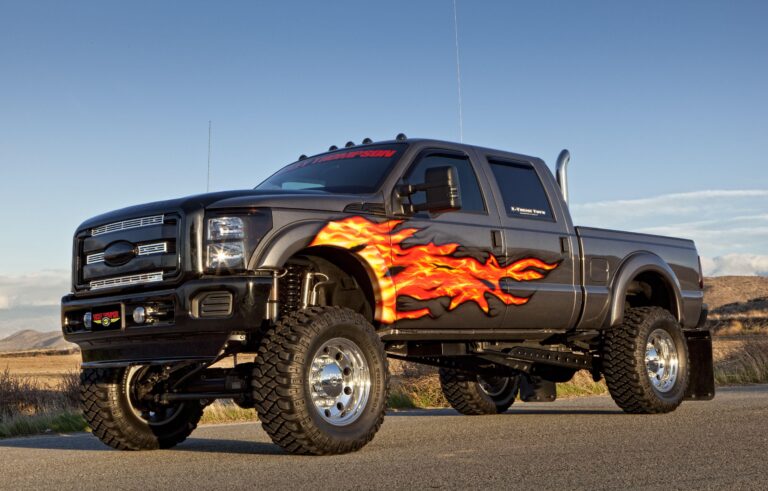26 Box Truck Dimensions In Feet: Your Comprehensive Guide to Moving and Logistics
26 Box Truck Dimensions In Feet: Your Comprehensive Guide to Moving and Logistics cars.truckstrend.com
In the world of moving, logistics, and small business operations, the 26-foot box truck stands as a ubiquitous workhorse. It’s the go-to vehicle for everything from relocating a large family home to delivering goods for a growing enterprise. But beyond simply knowing its length, understanding the complete "26 Box Truck Dimensions In Feet" is crucial for efficient planning, safe operation, and cost-effective utilization. This comprehensive guide will delve into every critical dimension, helping you master the art of maximizing this versatile vehicle’s potential.
Understanding the 26-Foot Box Truck: More Than Just Length
26 Box Truck Dimensions In Feet: Your Comprehensive Guide to Moving and Logistics
A 26-foot box truck, often referred to as a straight truck or cube truck, is a single-unit vehicle where the cargo area is permanently attached to the chassis and cab. The "26-foot" typically refers to the internal length of the cargo box, making it one of the largest non-CDL (Commercial Driver’s License) rental options available to the general public in many regions. Its popularity stems from its significant carrying capacity, making it ideal for large residential moves (typically 3-5 bedroom homes), transporting bulky commercial goods, or even serving as a mobile workshop or storage unit.
However, the 26-foot measurement is just the beginning. To truly leverage this vehicle, you need to grasp its full array of internal and external dimensions, as well as its weight capacities. These details dictate what you can load, where you can drive, and how safely you can operate.
Key Dimensions of a 26-Foot Box Truck: Internal & External Breakdown
Understanding the precise measurements of a 26-foot box truck is paramount for efficient packing, route planning, and ensuring compliance with road regulations. While slight variations exist between manufacturers (e.g., U-Haul, Penske, Budget, Ryder), the following dimensions represent a strong average for a standard 26-foot model.
Internal Cargo Box Dimensions (Usable Space)
These are the measurements that directly impact how much cargo you can fit inside.
- Length: Approximately 26 feet (312 inches)

- Practical Insight: This is the main selling point, allowing for long items like mattresses, couches, and even small vehicles (though not recommended for general moves).
- Width: Approximately 7 feet 10 inches to 8 feet (94-96 inches)
- Practical Insight: This width is crucial for fitting standard furniture and pallets. Most queen and king-size mattresses fit comfortably across.

- Height: Approximately 8 feet to 8 feet 6 inches (96-102 inches)
- Practical Insight: Generous height accommodates tall furniture, stacked boxes, and refrigerators.

- Cubic Capacity: Approximately 1,600 to 1,700 cubic feet
- Calculation: 26 ft (L) x 8 ft (W) x 8 ft (H) = 1664 cubic feet.
- Practical Insight: This vast volume is generally sufficient for a 3-5 bedroom house, carrying a significant amount of household goods.
- Rear Door Opening (Roll-up Door):
- Width: Approximately 7 feet 6 inches to 7 feet 10 inches (90-94 inches)
- Height: Approximately 7 feet 6 inches to 8 feet (90-96 inches)
- Practical Insight: The door opening is often slightly smaller than the internal box dimensions. Always measure your largest items to ensure they clear the door.
External Vehicle Dimensions (Overall Footprint)
These measurements are critical for navigating roads, bridges, tunnels, and parking areas.
- Overall Length (Bumper to Bumper): Approximately 33 to 35 feet
- Practical Insight: This is significantly longer than the cargo box itself. Be mindful of turns, parking spaces, and traffic.
- Overall Width (Including Mirrors): Approximately 9 feet to 10 feet
- Practical Insight: While the box is 8 feet wide, the mirrors extend further. This is vital for narrow lanes, drive-thrus, and avoiding side-swipes.
- Overall Height (Ground to Top of Truck): Approximately 11 feet 6 inches to 12 feet 6 inches
- Practical Insight: This is one of the most critical dimensions. Always be aware of bridge clearances, tunnel heights, tree branches, and parking garage limits. A common mistake leading to accidents.
- Wheelbase: Approximately 190 to 220 inches
- Practical Insight: While not a direct "dimension for fitting," a longer wheelbase contributes to better stability at highway speeds but can make tight turns more challenging.
- Ground Clearance: Approximately 1 foot to 1 foot 6 inches
- Practical Insight: Important for unpaved roads or uneven surfaces to avoid scraping the undercarriage.
Weight Capacities
Beyond spatial dimensions, weight is an equally, if not more, critical factor for safety and legality.
- Gross Vehicle Weight Rating (GVWR): Typically 25,999 lbs (11,793 kg)
- Practical Insight: This is the maximum permissible operating weight of the truck, including the truck itself, fuel, driver, passengers, and all cargo. The 25,999 lbs limit is crucial because it allows most 26-foot box trucks to be driven without a Commercial Driver’s License (CDL) in the U.S. (CDL required at 26,001 lbs and above). Always check local and state regulations.
- Payload Capacity: Approximately 10,000 to 15,000 lbs (4,500 to 6,800 kg)
- Practical Insight: This is the actual amount of cargo you can load into the truck, calculated as GVWR minus the truck’s curb weight (empty weight). It’s common for people to overload trucks, which is extremely dangerous and illegal. Always weigh your loaded truck if unsure.
- Towing Capacity (if equipped with hitch): Varies, typically 5,000 to 10,000 lbs
- Practical Insight: If you plan to tow a car or trailer, ensure the truck has a hitch and verify its specific towing capacity.
Why Dimensions Matter: Practical Implications
Understanding these dimensions isn’t just an academic exercise; it has profound practical implications for a successful and stress-free experience.
- Loading Efficiency: Knowing the internal length, width, and height allows you to plan your packing strategy. You can determine how many rows of boxes fit, whether your couch needs to stand on end, or if your king-size mattress will lay flat. The rear door dimensions are crucial for loading large appliances like refrigerators or washing machines.
- Route Planning & Navigation: The overall height is your most important external dimension for route planning. Low bridges, tunnels, drive-thrus, and even tree branches can cause significant damage or accidents if you’re not aware of your truck’s height. The overall length impacts your turning radius and ability to navigate tight city streets or cul-de-sacs.
- Parking and Maneuvering: A 35-foot vehicle is a beast compared to a car. Knowing its dimensions helps you assess parking availability, anticipate blind spots, and execute turns safely, especially in residential areas or busy loading docks.
- Cost Calculation: While not a direct dimension, understanding payload capacity prevents overloading, which can lead to fines, increased fuel consumption, and mechanical issues. Being aware of the overall dimensions can also influence toll costs on certain routes.
- Legal Compliance & Safety: Adhering to GVWR limits is not just about avoiding fines; it’s about safety. An overloaded truck has compromised braking, handling, and stability, increasing the risk of accidents.
Important Considerations When Renting/Operating a 26-Foot Box Truck
- Ramp vs. Liftgate: Most 26-foot rental trucks come with either a walk-up ramp or a hydraulic liftgate. A liftgate is invaluable for heavy items (appliances, pianos) and significantly reduces physical strain. A ramp is better for rolling dollies or items that can be walked up. Confirm which is included or available as an add-on.
- Fuel Type and Consumption: These trucks typically run on gasoline, not diesel, and have large fuel tanks. Expect poor fuel economy, often in the range of 8-12 MPG, depending on load, terrain, and driving style. Budget accordingly.
- Insurance: Your personal car insurance may not cover rental trucks. Rental companies offer supplemental insurance, which is highly recommended for peace of mind.
- Driving Experience: If you’re not accustomed to driving large vehicles, take extra precautions. Practice turning, backing up, and braking in an empty lot. Be aware of increased blind spots and the need for more stopping distance.
- Packing Strategies: Distribute weight evenly, placing heavier items on the bottom and centered over the axles. Secure all items with tie-downs or ropes to prevent shifting during transit, which can affect stability. Utilize moving blankets to protect furniture.
Tips for Maximizing Space and Safety
- Load Strategically: Start with large, heavy items against the back wall (furthest from the cab). Stack boxes from floor to ceiling, creating a sturdy base.
- Disassemble When Possible: Beds, tables, and some shelving units can be broken down to save space and make them easier to handle.
- Use Vertical Space: Maximize the 8-foot internal height by stacking boxes, dressers, and appliances.
- Secure Everything: Use ratchet straps, ropes, or cargo bars to secure loads every few feet. Shifting cargo is a major safety hazard.
- Check Clearance Religiously: Always be mindful of your truck’s overall height. Look for signs indicating bridge clearances, especially on unfamiliar routes. "Low Clearance" signs are there for a reason!
- Practice Defensive Driving: Allow extra following distance, brake earlier, and take turns wide to account for the truck’s length and weight.
Estimated 26-Foot Box Truck Rental Costs (Illustrative Example)
Please note: These are estimated costs and can vary significantly based on location, rental company (U-Haul, Penske, Budget, Ryder, etc.), time of year, demand, duration of rental, and specific add-ons. Always get a direct quote for your specific needs.
| Rental Period | Base Rate (Estimated) | Mileage Charge (Estimated) | Typical Inclusions | Common Add-ons (Estimated) | Notes |
|---|---|---|---|---|---|
| Daily | $39.99 – $79.99 | $0.59 – $0.99 per mile | Basic truck rental | Liftgate: $30-75 | Often requires returning to origin. |
| Weekly | $350 – $600 | $0.39 – $0.79 per mile | Basic truck rental | Dolly/Hand Truck: $10-25 | Better for longer projects or multi-day moves. |
| Monthly | $1,200 – $2,500 | Often lower per-mile rate or mileage packages | Basic truck rental | Moving Blankets: $5-15/dozen | Best for long-term commercial use or extended projects. |
| One-Way | Variable, typically higher base rate (e.g., $800 – $2,500+) | Often includes limited free miles, then per-mile charge | Truck rental, ability to drop off at different location | Insurance: $20-60/day | Price depends heavily on origin/destination and demand. |
| Deposit | $100 – $500 (Refundable) | N/A | N/A | Fuel: Varies by market | Held until truck is returned and inspected. |
Important Disclaimers:
- Prices are estimates only. Actual costs will vary.
- Fuel is typically not included in the base rate; you’re expected to return the truck with the same fuel level.
- Taxes and fees are additional and can add significantly to the total cost.
- Insurance is highly recommended and adds to the daily cost.
- Check for hidden fees or specific mileage caps.
Frequently Asked Questions (FAQ) about 26-Foot Box Trucks
Q1: Do I need a CDL (Commercial Driver’s License) to drive a 26-foot box truck?
A1: In most U.S. states, no, for personal use. The GVWR (Gross Vehicle Weight Rating) of these trucks is typically kept just under 26,001 lbs (usually 25,999 lbs), which is the threshold for requiring a CDL for non-hazardous materials. However, always verify local and state regulations, especially if you plan to operate it commercially or tow a heavy trailer.
Q2: How much can a 26-foot box truck hold in terms of household items?
A2: A 26-foot box truck, with its 1,600-1,700 cubic feet of capacity, is generally sufficient for moving a 3 to 5-bedroom house. This can include large appliances (refrigerators, washers/dryers), multiple couches, dining room sets, bedroom sets, and a large number of boxes.
Q3: What is the typical fuel efficiency of a 26-foot box truck?
A3: Expect relatively poor fuel economy. These trucks typically get between 8 and 12 miles per gallon (MPG), depending on the load, terrain, speed, and driving habits. Budget for significant fuel costs, especially for long-distance moves.
Q4: Can I tow a car with a 26-foot box truck?
A4: Many 26-foot box trucks are equipped with a tow hitch. If you plan to tow a car or trailer, you must verify the specific truck’s towing capacity and ensure your vehicle/trailer weight falls within that limit. Always use a proper tow dolly or car carrier.
Q5: What’s the biggest challenge when driving a 26-foot box truck?
A5: The two biggest challenges are its overall height (watching out for low clearances like bridges and drive-thrus) and its length and width (making tight turns, parking, and navigating narrow spaces difficult). Blind spots are also significantly larger than in a passenger car.
Q6: Are liftgates standard on 26-foot box trucks?
A6: Not always. Many rental companies offer them as an optional add-on or have a limited number of trucks equipped with them. If you need a liftgate, specify this when reserving and confirm it upon pick-up.
Conclusion
The 26-foot box truck is an invaluable asset for anyone undertaking a substantial move or managing significant cargo. However, its effectiveness and safety hinge on a thorough understanding of its true dimensions, not just its advertised length. By grasping the internal space for loading, the external footprint for navigation, and the critical weight capacities, you empower yourself to plan smarter, drive safer, and execute your moving or logistics tasks with confidence. Before you hit the road, take the time to measure, plan, and familiarize yourself with every dimension of your chosen 26-foot workhorse. Your peace of mind, and the integrity of your cargo, depend on it.






